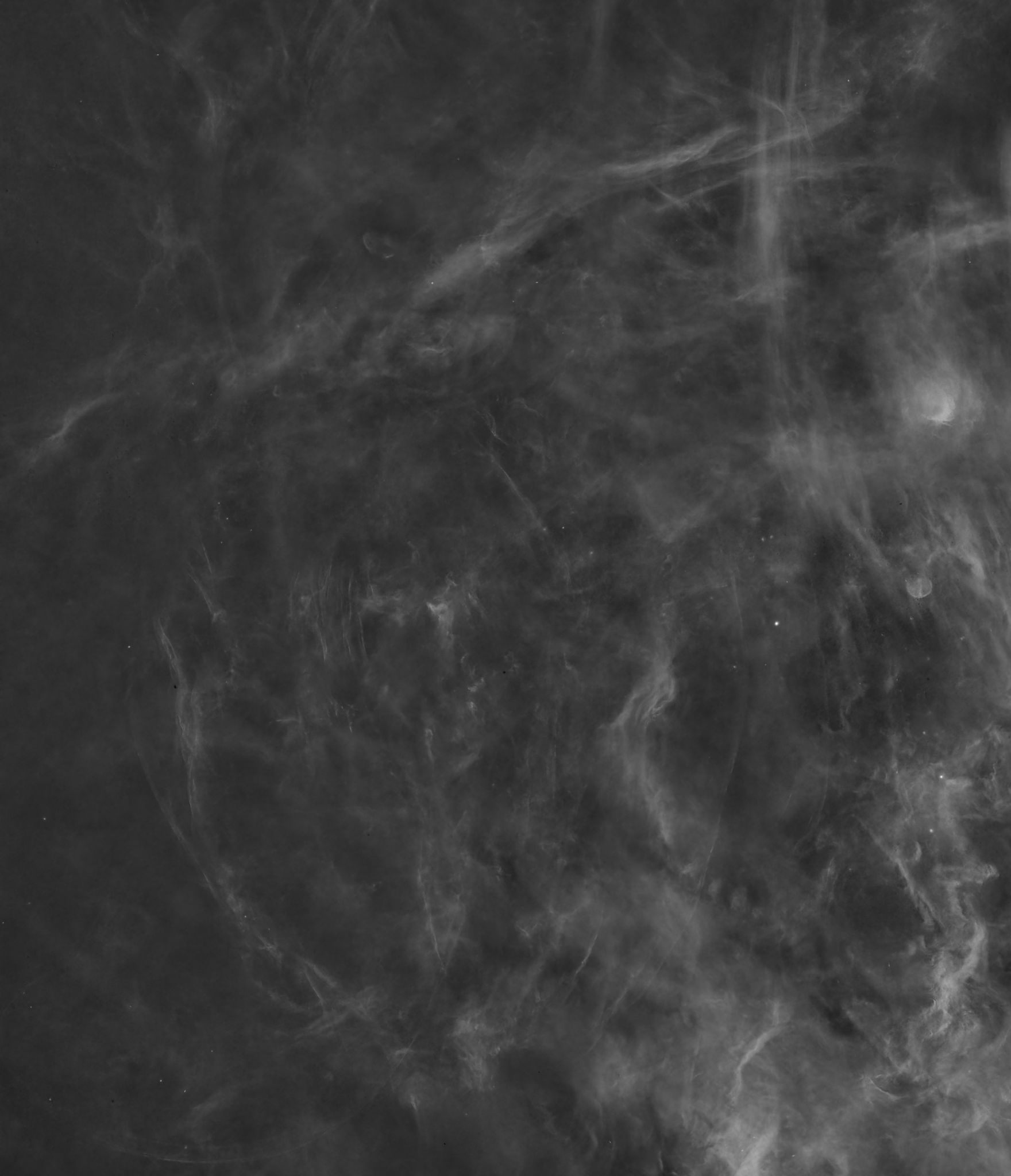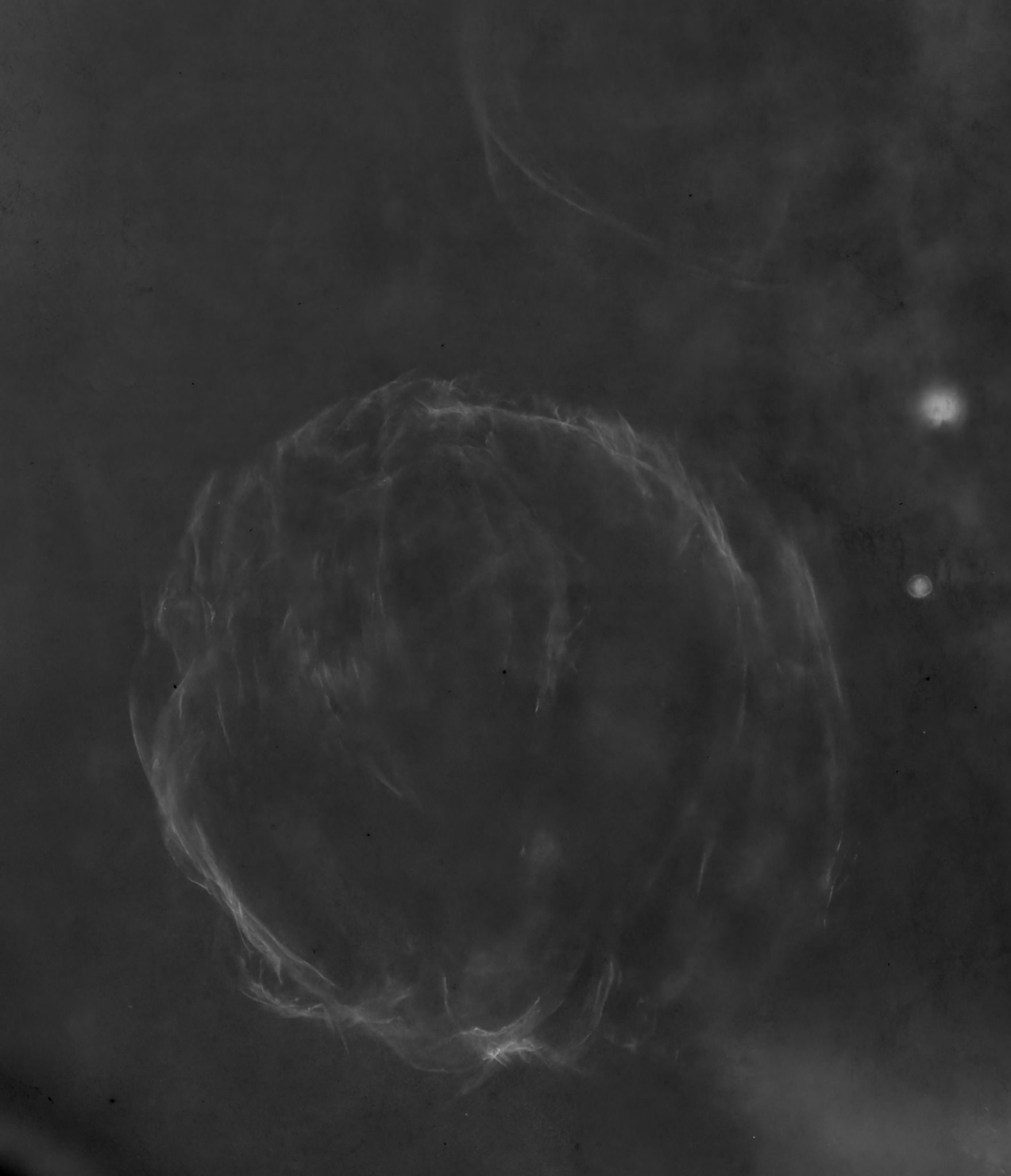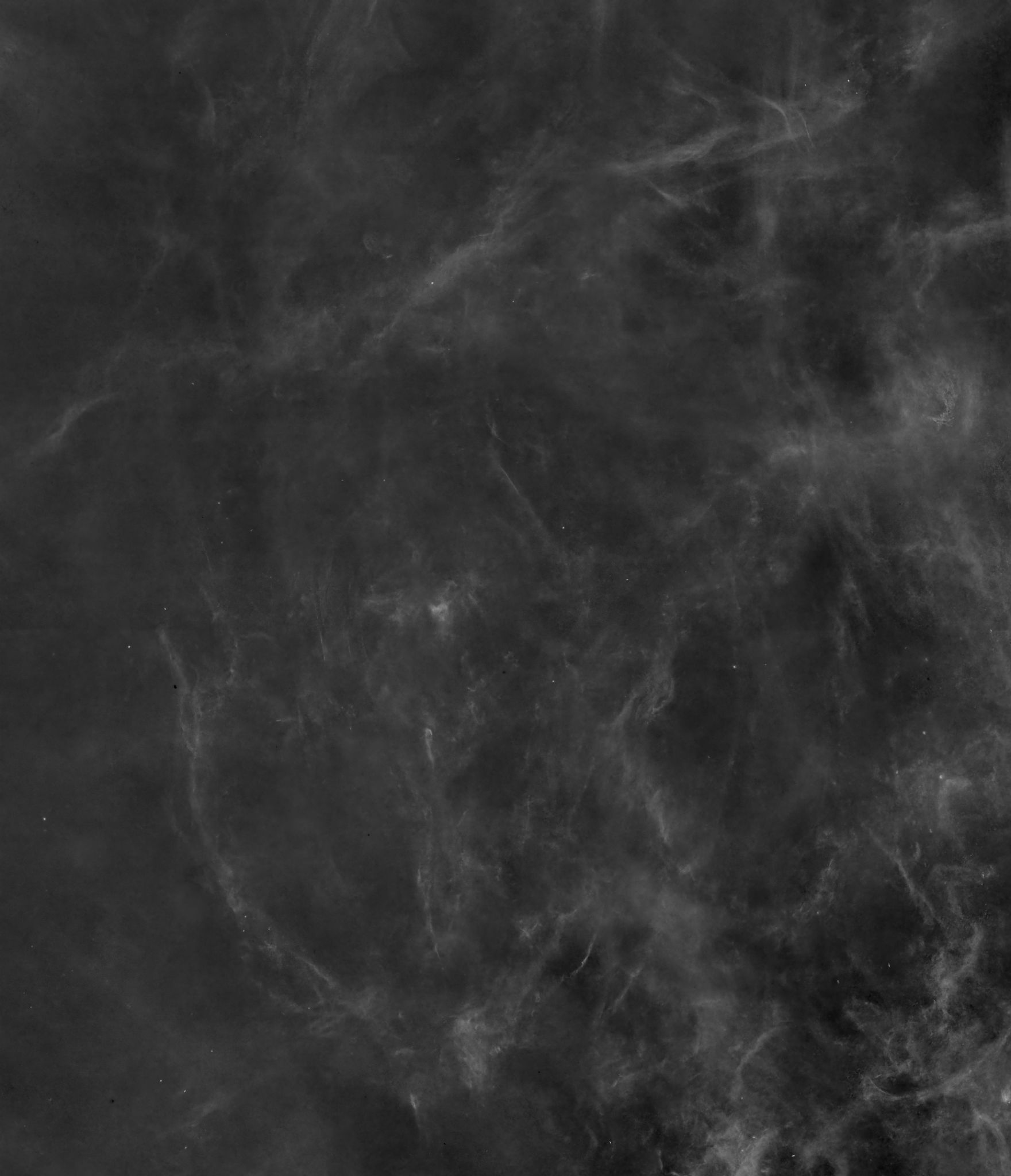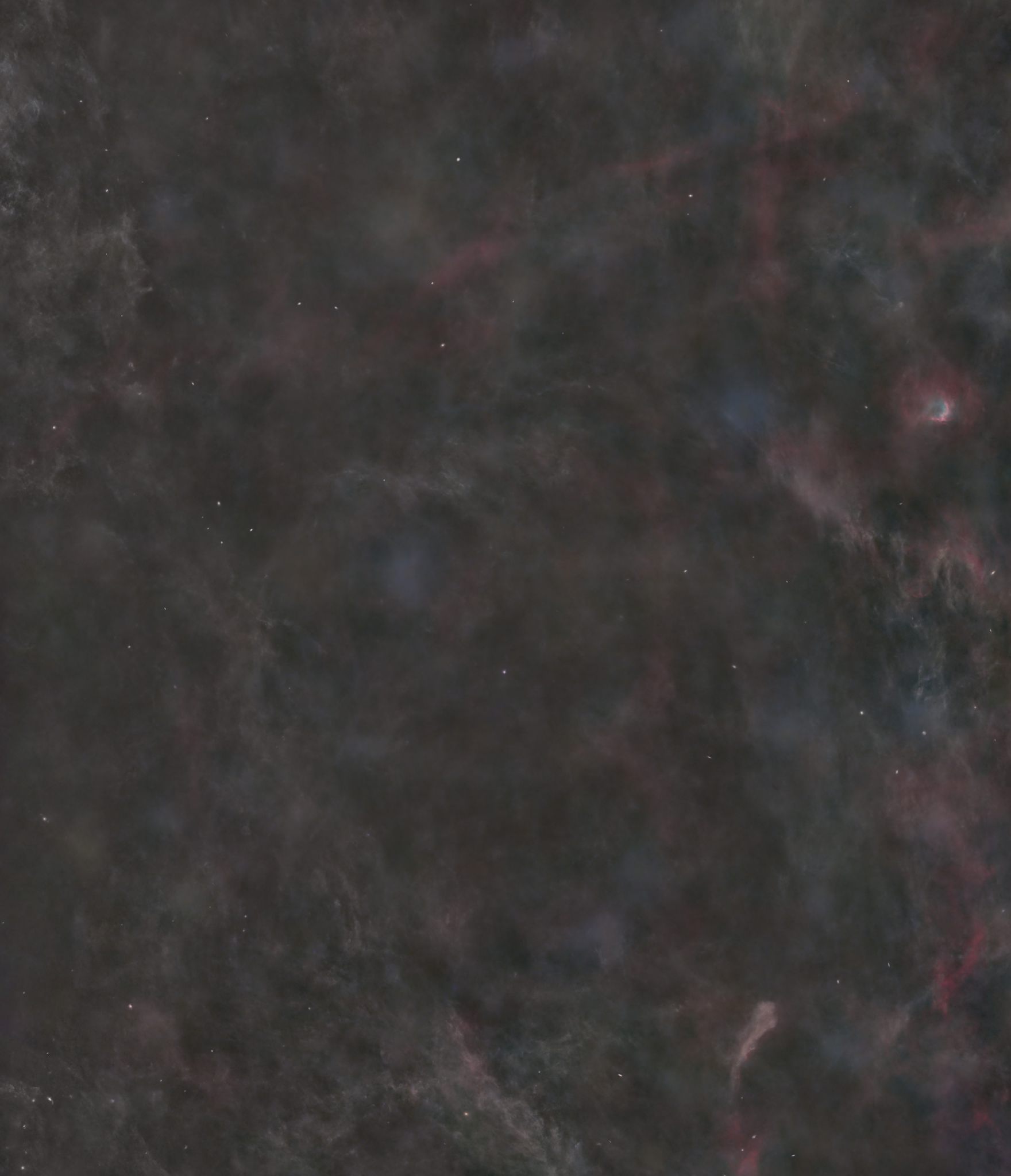Description:
The NHZ team is happy to present a first clear picture of HU6 – an unknown Supernova Remnant in the constellation of Monoceros.
Discovered in 2019 by the amateur astronomer Laurent Huet, this potential SNR would be the biggest ever discovered by any amateur, spanning a mind boggling 3°30′ in diameter ( about 7 moons in diameter from earths view point).
Note that I say potential SNR, as it’s nature has not yet been confirmed with a 100% certainty. While it is extremely likely to be a isolated SNR, it could also be part of another, bigger SNR, namely the Monogem SNR which spans a whooping 29°x29° in the nightsky. While this is unlikely to be the case due to HU6’s morphology and location, it cannot be ruled out with certainty. We’ll refer to it as SNR in the rest of the text.
The NHZ team shot this SNR as part of a bigger survey of this region and the monogem. While our past efforts focused soley on HU6, future projects include a comprehensive image of the whole monogem ring that will enable us to get a better understanding of the object. Under the lead of Dr. Fesen and in cooperation with Marcel Drechsler, Bray Falls, Laurent Huet and others, we are working on publishing an in-depth research paper on this region.
The intial spark to photograph HU6 came from a suggestion from Sakib Rasool; following this, and doing some research on the region ourselves, it immediately became clear that this would be our next target. As this huge 210 arcmin in diameter object (catalogued a Planetary nebula) lacked a detailed picture as well as the seemingly lack of knowledge of it existing in the amateur realm, this further motivated us to start getting data.
In the end a total of 210 hours of integration came together to form this amazing in-depth picture. Split between LRGBHSO, this image truly captures all of the interesting features present. The LRGB were used to highlight the IFN in this region, the Oiii to showcase Hu6’s shell, the Ha to bring forth the background Ha as well as some Ha parts of HU6 itself and finally Sii (layered to yellow) to highlight regions of strong ionisation in HU6. All this data together forms an extremely comprehensive image of the SNR. We encourage everyone to zoom into the image and explore the different compositions in Hu6 yourself.
Capturing this beauty was a real challenge as it’s pretty faint – thanks to our two amazing photographers Patrick and Tarun we were able to collect a total of 210 hours of data and gather as much signal as possible. Thanks to their immense commitment to this project! Also big thank you to Steeve, who as always did a wonderful job at editing this dataset. Getting the faintest details to show while preserving details and accuracy was no easy job.
We hope you all enjoy this image and are eager to see your renditions of it.
Text written by Tim,
on behalf of the NHZ
Credits:
Team Coordinator: Tim Schaeffer
Processing: Steeve Body
Photographers:







